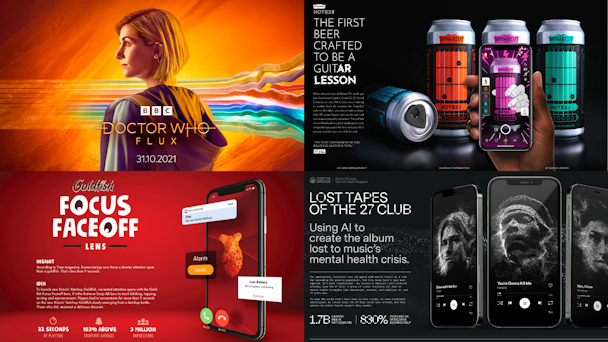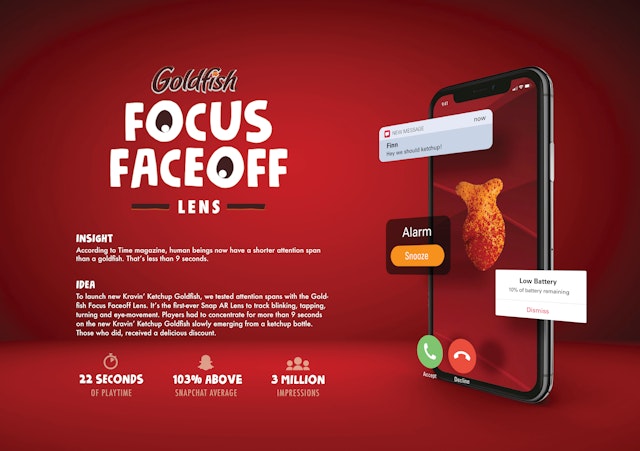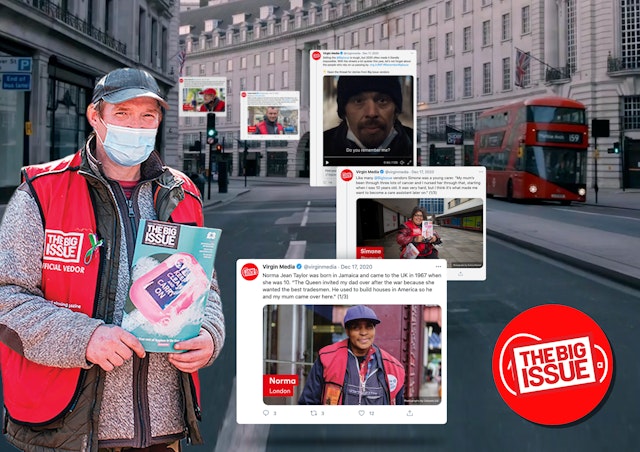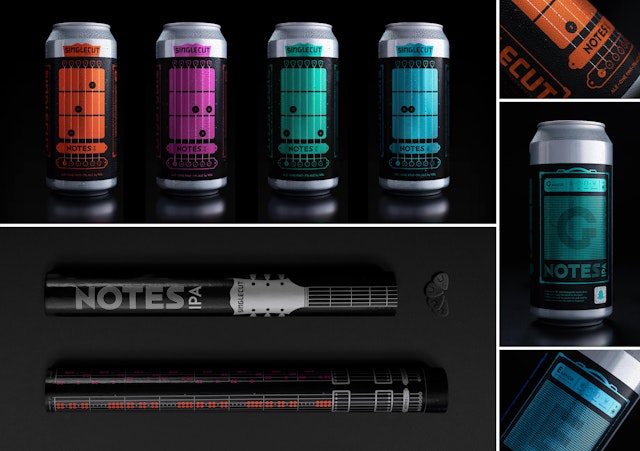The Drum Awards for Digital Advertising winners revealed: see the best digital ads of 2022
The finest digital advertising campaigns, teams and talent of 2022 have been rewarded at The Drum Awards for Digital Advertising. We take a look at this year’s winners and find out how they wowed the judges.

Learn which clever ideas swept The Drum Awards for Digital Advertising
Mental health organization Over The Bridge and its agency Rethink clinched the Grand Prix at The Drum Awards for Digital Advertising with an ingenious AI campaign revealing the music we missed out on when Kurt Cobain, Jimi Hendrix, Jim Morrison and Amy Winehouse were taken from us too soon.
The Canada-based non-profit, which supports musicians with their mental health, impressed the judges with the ’lost tapes of the 27 club’ – new computer generated recordings of the four legendary musicians released on streaming services to counter the romanticized narrative around ’the tortured artist’ and urge those facing struggles to seek help before it’s too late.
Staying on the music theme, this year’s Chair Award – selected by jury head Jessica Leong, associate director for programmatic trading at WarnerMedia – was awarded to The7Stars and recipe box company Gousto, which teamed up with Spotify to match up listening habits with dinner recommendations.
The winners were crowned at a ceremony held in front of a live audience at The Drum Labs in London and broadcast around the world on Thursday, April 21. The event rewarded the best digital marketing initiatives of the last year with winners ranging from global heavy-hitters to creative indies.
Away from the campaign categories, the night’s other big winners included UK-based RocketMill, which landed the hotly contested agency of the year award after an exhaustive search, and Merkle strategy associate Caroline Baselj, who took home the Rising Star prize.
The competition was judged by a powerhouse panel of digital advertising leaders from the likes of HP, Coca-Cola, The New York Times and Havas Media Group. You can see a selection of the work that caught their eye below and the full list of winners on The Drum Awards for Digital Advertising website.
Using AI to generate new songs from dead artists to raise mental health awareness
Grand Prix winner and Best Use of Audio: The Lost Tapes Of The 27 Club by Rethink
Fans of music culture are all-too-aware of the 27 Club, the group of amazing musicians that died at the age of 27. Mental health organization Over The Bridge used AI to create unique songs for Kurt Cobain, Jimi Hendrix, Jim Morrison and Amy Winehouse to highlight the work we may have missed out on.
The group’s research found that more than 70% of musicians have experienced anxiety and panic attacks, and suicide attempts. Among music industry workers these feelings are twice as high as the general population – all the while, the issue’s romanticized with the immortalization of ’tortured artists’.
Rethink trained a computer to analyze the audio data from four artists – Hendrix, Winehouse, Morrison and Cobain – to identify specific patterns in their riffs, rhythms, lyrics and melodies. Google AI Magenta then generated all new songs.
The four tracks raised awareness of mental illness pushed across popular audio apps to a target audience. The campaign boasted 1.7bn earned media impressions as well as noting an 830% increase of musicians seeking help in the aftermath of the campaign. It also saw 2m album streams from more than 160 countries in just one week.
Vice dubbed the campaign a “sad reminder“.
Check out the credits here. And read more about the campaign here.
A fandom treasure hunt spanning space, time and media
Best High Impact Campaign: Doctor Who: Flux by BBC Studios Creative
Doctor Who, the mind-bending BBC sci-fi drama, needs marketing that’s just as bold as the show. Enter in-house team BBC Studios Creative, which mixed the real world with digital experiences that were uniquely tailored to fans.
Doctor Who: Flux was a six-hour mystery that spread clues across media and the real world leading fans to a unique way to experience the show’s narrative.
The campaign began when fans spotted a message hidden in the end board of the show’s Comic Con teaser trailer. Once cracked, that led to a secret website with a voice message from The Doctor’s companion, Yaz. She explained that the Doctor was missing and enlisted fans for the hunt.
AR clues were hidden in art gallery paintings, the Natural History Museum, The British Library and more. They were also hidden across our owned channels like the Doctor Who magazine, the Doctor Who newsletter, and even months earlier on Doctor Who’s Instagram. A final clue needed to be discovered using Shazam. It then mirrored a plot point in the series where the Doctor Who social platforms ’disappeared’.
The team behind the move said: “This idea cost nothing and created massive anticipation and excitement online and was picked up by both national and international press.“
Check out the credits here. And read more about the campaign here.
A Snap Lens rewarding users for playing with a new product
Best Use of Gaming: Goldfish Focus Off Lens by Zulu Alpha Kilo
Gaming doesn’t have to be complicated. A simple idea, well-executed can do the job. Zulu Alpha Kilo created a Snap lens for teens between 13 and 17 to raise awareness of Campbell’s new Goldfish cracker in Canada.
Subverting so-called research that teens on social attention spans, it created The Focus Face-Off Lens and challenged them to see if they can focus on something very slow. This was Kravin’ Ketchup Goldfish coming out of a Ketchup bottle. And they stepped up to the challenge.

If players could pay attention for more than nine seconds – the apparent attention span of a real goldfish – they unlocked a discount code. The game used eye-tracking tech to measure focus. Players received a scorecard which also pulled in their username to encourage them to share with friends. The campaign was promoted in the Snapchat carousel for four weeks and culminated in a National Takeover on Snap.
Average engagement time apparently doubled Snap’s average for a Lens at 22.31 seconds.
Pivoting an entire media business model using donating socials
Best Paid Social Campaign: Twitter Street

Big Issue vendors were losing £100,000 in donations each week in 2020, and in the run-up to Christmas, their most lucrative period was diminished by the lockdown. The was no one to sell the magazine to on the city streets, risking the livelihoods of the vendors.
Rapp, working with Virgin Media, created Twitter Street and mobilized 350,000 followers for donations. During the pandemic, it was important to maximize the Big Issue’s online presence in lieu of the streets. Eight days before Christmas, Virgin Media handed over its Twitter account to Big Issue vendors to help them reconnect customers.
It says customers started buying online instead and switched to a more profitable subscription model.
Check out the credits here. And read more about the campaign here.
The beer can that teaches guitar
Most Effective Use of Creativity Winner: Notes IPA by Zulu Alpha Kilo

Zulu Alpha Kilo appears again in this list with a really cool campaign for Notes IPA. It introduced the first beer crafted to teach you guitar. This unique piece of packaging ties digital and physical with precision in a buzzworthy manner.
The four packs of beer featured cans with distinct labels, each displaying a foundational guitar chord: C, D, G or E-minor. The can could be gripped to teach the chords and, furthermore, a Snapchat code unlock an augmented reality guitar lesson on phones.
An injection molded guitar pick was also fitted right on the pull tab.
As a result of the campaign, Notes IPA sold out twice as fast as an average SingleCut release and marked the brand’s most successful social media initiative.
Engagement rates on Snapchat for the AR lens performed 500% above average, with a cost per swipe $1 lower than the benchmark ($0.48 v $1.50). The average time spent was more than double the benchmark (7.8 seconds v 3 seconds).
View all of the winners on the bespoke website. And if you want to watch the event play out live, you can watch it here.

